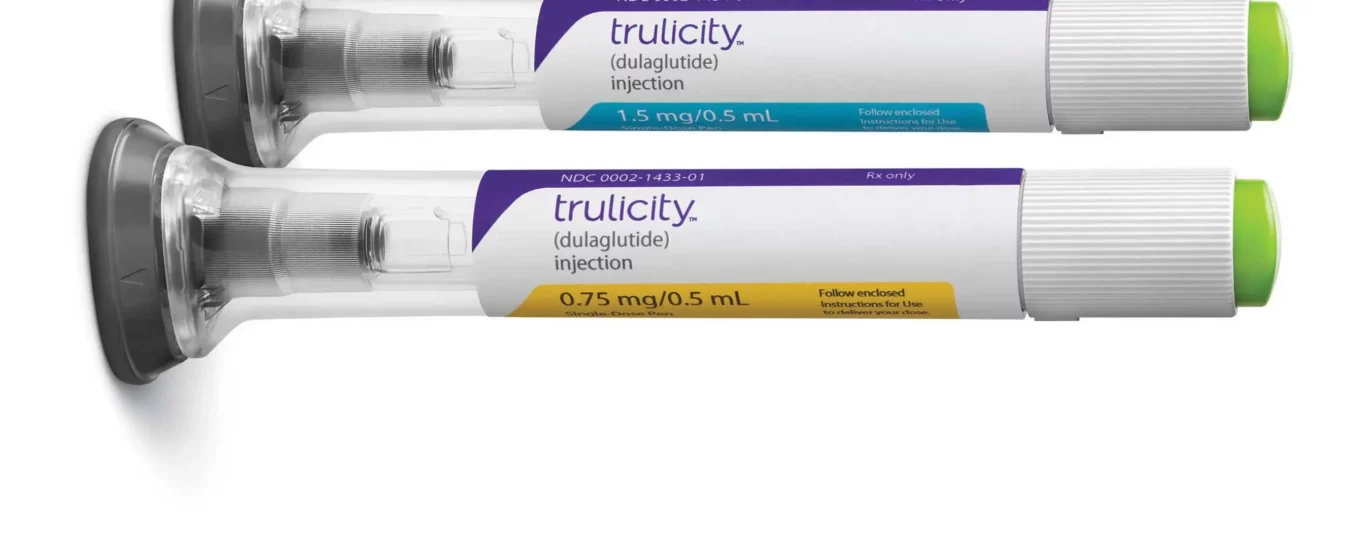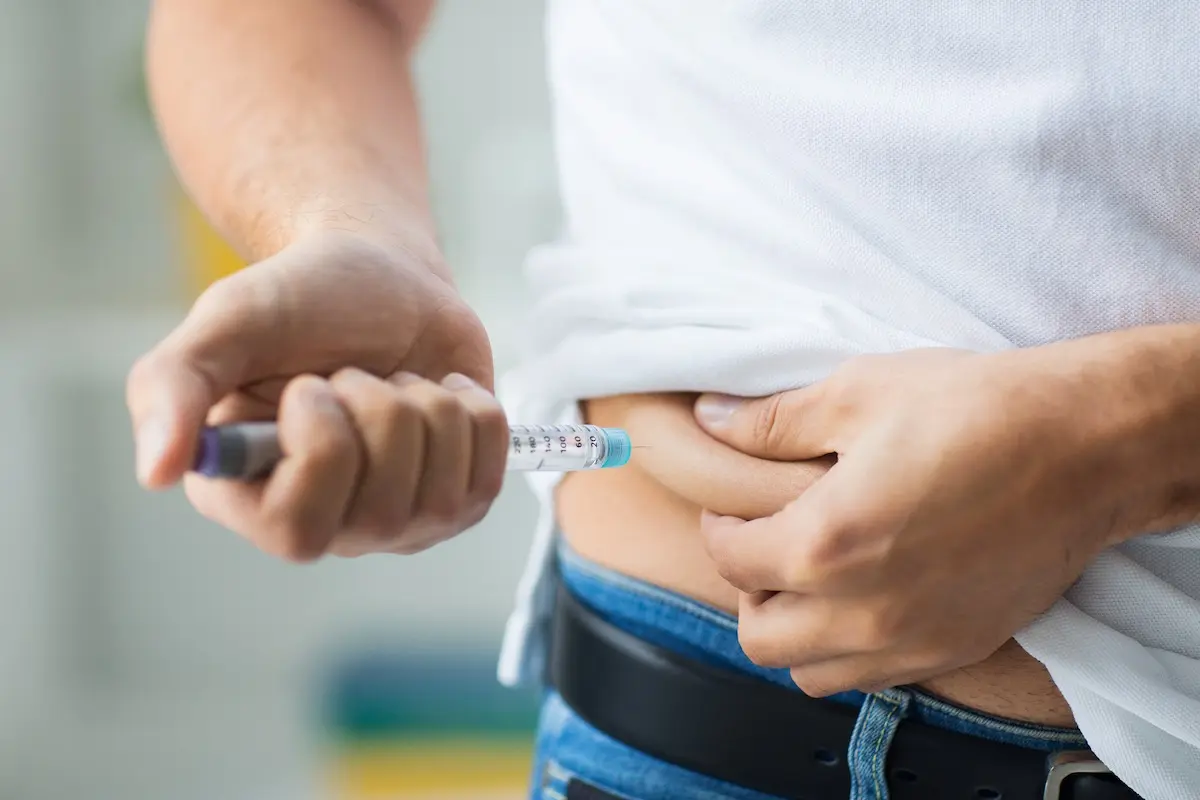


Trulicity is a medicine that is commonly used for the management of type 2 diabetes. Trulicity belongs to a class of drugs called glucagon-like peptide-1 receptor agonists (GLP-1 RAs). It helps regulating blood sugar in the body drugs called glucagon-like peptide-1 receptor agonists (GLP-1 RAs). Trulicity is designed to help regulate blood sugar levels by mimicking the actions of a natural hormone called glucagon-like peptide-1 (GLP-1), which results in respond to food intake. As patient is taking Trulicity, he should must know that “how long does Trulicity stay in your system?“. This help us in making decisions regarding diabetes management. In this article, we will provide you the basic overview of Trulicity, including its mechanism of action, the factors affecting its elimination and an approximation of the duration for which it stays in the system.
Trulicity is a medication used to treat type 2 diabetes. It works by mimicking a hormone called GLP-1 in your body. GLP-1 helps control blood sugar levels. Trulicity stimulates the release of insulin, slows down digestion, reduces glucose production in the liver, and makes you feel fuller after meals. Doctors prescribe Trulicity to help manage type 2 diabetes. This is a chronic condition where your body does not use insulin properly and has high blood sugar levels. Trulicity is used along with diet and exercise when other treatments haven’t worked well enough or caused problems.
Trulicity comes in a pre-filled pen. You use the pen to give yourself an injection just below the skin. It’s a simple process that you do once a week, on the same day each week. The pen is already loaded with the right amount of medication, so you don’t need to measure anything. Just follow the instructions from your doctor or the medication guide to make sure you use Trulicity safely and effectively.
Trulicity is given as a shot, which is injected just under the skin. You’ll usually get the injection once a week, as instructed by your doctor. Trulicity comes in pre-filled pens that have the medicine and a needle. The injection can be done in your belly, thigh, or upper arm. Make sure to follow the instructions from your doctor or the medication’s packaging for the proper way to give yourself the injection.
Once you get the injection, Trulicity slowly enters your bloodstream. The medicine is designed to release its active ingredient, dulaglutide, over a long period of time. This slow release helps Trulicity work continuously to control your blood sugar levels throughout the week.
Trulicity is broken down in the body mainly through natural processes. The exact ways in which it gets broken down are not completely understood. However, we do know that different tissues, including the liver, help with this process. After Trulicity is broken down, the leftover parts are processed and removed from the body.
Trulicity is mostly eliminated through the kidneys. After the body breaks down the medicine, the waste products are filtered by the kidneys and then passed out of the body through urine. The time it takes for Trulicity and its breakdown products to completely leave your system can vary depending on factors like your individual characteristics and overall health.
The half-life of a medication refers to the time it takes for half of the drug to be eliminated from the body. It is an important pharmacokinetic parameter that helps determine how long a drug remains active in the system. Understanding the half-life of Trulicity is important in determining the dosing frequency and maintaining consistent therapeutic effects. Several factors can influence the half-life of Trulicity in an individual’s body. These factors may include age, overall health, liver function, kidney function, and the presence of other medications or medical conditions. Certain medications or medical conditions may interact with Trulicity and affect its metabolism and elimination, potentially altering its half-life.

The average half-life of Trulicity, as observed in clinical studies, is approximately 5 to 6 days. This means that it takes around 5 to 6 days for half of the Trulicity dose to be eliminated from the body. However, it’s important to note that individual variations can occur, and the half-life can be influenced by the factors mentioned above.
It’s worth mentioning that even though Trulicity has a relatively long half-life, the sustained-release nature of the medication allows for once-weekly dosing. This extended duration of action helps maintain stable blood sugar control between doses. It is important to follow the prescribed dosing schedule recommended by your doctor for optimal effectiveness and to achieve the desired therapeutic outcomes.
Trulicity remains in the body for a significant duration after it is administered. The duration of Trulicity in the system is influenced by various factors, including its absorption, metabolism, and elimination. While the half-life provides an estimate of the time it takes for half of the drug to be eliminated, it is important to consider the complete duration of Trulicity’s presence in the body. The duration of Trulicity in the system can vary depending on factors such as the dosage prescribed and individual characteristics. Higher doses of Trulicity may stay in the body for a longer period compared to lower doses. Additionally, individual factors such as age, overall health, liver function, and kidney function can influence the duration of Trulicity’s presence in the body. It’s important to note that the duration may differ from person to person.
With repeated dosing, Trulicity can gradually accumulate in the body over time. This accumulation can lead to a steady-state concentration, where the drug levels reach a stable balance. It’s important to adhere to the prescribed dosing schedule to maintain therapeutic levels of Trulicity. Accumulation of Trulicity through repeated dosing ensures consistent blood sugar control between doses and contributes to its sustained efficacy. It’s worth noting that the effects of accumulation and duration of Trulicity in the system can vary from person to person. Factors such as individual metabolism and clearance rates, as well as potential interactions with other medications, can influence the extent of accumulation and how long Trulicity remains in the body.
The metabolism of Trulicity, like many medications, can be influenced by liver and kidney function. The liver plays a significant role in the breakdown of drugs, including Trulicity. If liver function is impaired, it may affect the metabolism of Trulicity and potentially prolong its clearance from the body. Similarly, the kidneys are responsible for filtering waste products, including drugs and their metabolites. If kidney function is compromised, it may impact the elimination of Trulicity, leading to a longer duration of the drug in the system.
Age, weight, and overall health can also affect the clearance of Trulicity from the body. In general, as people age, their metabolic processes tend to slow down, including the metabolism and elimination of drugs. This can result in a longer duration of Trulicity in the system. Additionally, body weight can influence drug clearance, as larger people may require higher doses to achieve therapeutic effects. Overall health, including the presence of certain medical conditions, can impact drug clearance as well. It is important to consider these factors when determining the appropriate dosing and monitoring of Trulicity.
Trulicity can potentially interact with other medications, which can impact its clearance from the body. Certain medications may affect the enzymes responsible for metabolizing Trulicity, leading to slower or faster clearance rates. Drug interactions can also occur at the level of kidney function, affecting the elimination of Trulicity. It is important to inform your doctor about all the medications, including prescription, over-the-counter, and herbal supplements, that you are taking to assess any potential interactions and adjust the Trulicity dose if necessary.
When taking Trulicity, there are some common side effects that you may experience. These can include nausea, diarrhea, vomiting, stomach pain, decreased appetite, indigestion, and fatigue. These side effects are generally mild to moderate in nature and often improve over time as your body adjusts to the medication. However, if you experience persistent or severe side effects, it’s important to notify your doctor. There are several safety precautions to keep in mind when taking Trulicity. Firstly, it is important to inform your doctor about any existing medical conditions, such as a history of pancreatitis, kidney problems, or a family history of medullary thyroid carcinoma (MTC). Additionally, it’s important to let your doctor know about any other medications, supplements, or herbal products you are taking to avoid potential drug interactions.
Trulicity is not recommended for use in people with a personal or family history of MTC or in those with multiple endocrine neoplasia syndrome type 2 (MEN 2). It is also not recommended for use in persons with severe gastrointestinal disease, such as gastroparesis. Your doctor will assess your medical history and determine if Trulicity is appropriate for you.
Read Also: How Long Does Clonazepam Stay In Your System?
Understanding how long Trulicity stays in your system is important for managing your diabetes effectively. Trulicity has an average half-life of approximately 5 to 6 days, meaning it takes this amount of time for half of the drug to be eliminated from your body. However, individual variations can occur based on factors such as liver and kidney function, age, weight, and overall health. Factors like liver and kidney function, age, weight, and interactions with other medications can influence how long Trulicity remains in your system. Impaired liver or kidney function may prolong the clearance of Trulicity, while factors such as age and weight can affect how quickly the body processes and eliminates the drug. It is important to discuss these factors with your doctor to ensure the safe and effective use of Trulicity.
Moreover, following your doctor’s instructions is also important. Adhering to the prescribed dosage and dosing schedule will help maintain therapeutic levels of Trulicity and achieve optimal blood sugar control. Regular monitoring of your blood sugar levels and periodic check-ups with your doctor will allow for evaluation of your response to the medication. It also helps in designing daibetes management plan.